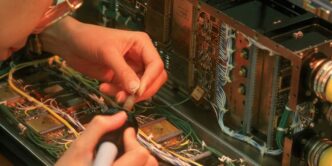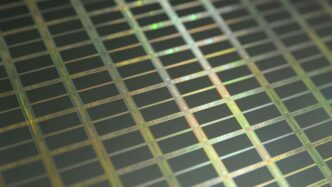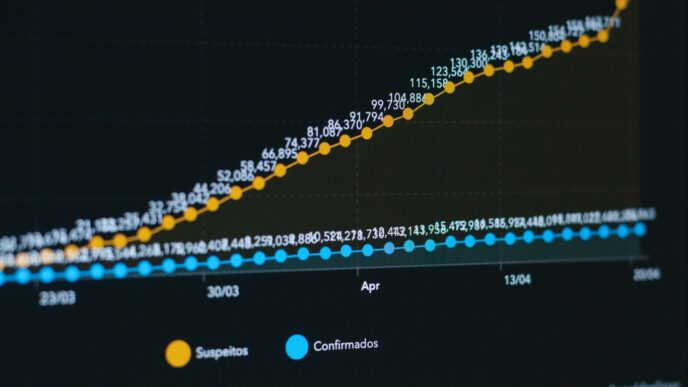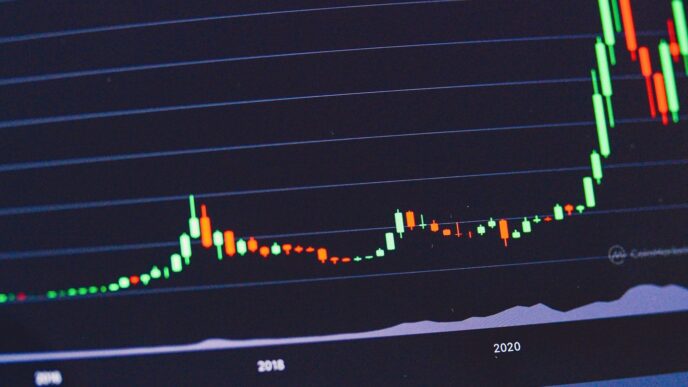ECTC 2024 was a big deal this year, bringing together tons of smart folks in packaging and microelectronics. If you were there, especially if you work in advanced packaging, you’re probably feeling pretty important right now. It seems like the industry really needs people who can solve tough problems, whether it’s making things more energy-efficient, improving production, or designing new materials. It’s a really exciting time to be in this field, and the conference showed just how much innovation is happening.
Key Takeaways
- ECTC 2024 saw a record number of paper submissions, leading to some really high-quality presentations.
- Hybrid bonding was a major topic, showing its importance for AI and high-performance computing.
- There’s a growing need for advanced substrate solutions, with a move towards glass substrates.
- The conference highlighted the importance of industry and government working together, plus the need for more skilled workers.
- New packaging innovations like PowerSiP and laser-based release technology are changing how we think about interconnects.
Key Themes and Hot Topics at ECTC 2024
ECTC 2024 was buzzing with activity, drawing nearly 2000 attendees all focused on the latest advancements in electronic packaging. It felt like the place to be for anyone involved in advanced packaging. The conference program chair, Michael Meyer, highlighted the difficulty in selecting just 375 papers from a record number of submissions, which really speaks to the quality and relevance of the work presented.
Hybrid Bonding Innovations
Hybrid bonding was definitely a headliner. It’s seen as a key technology for AI and high-performance computing, but there are still plenty of hurdles to overcome. Everyone was talking about it, and it seemed like every other presentation touched on some aspect of it. It’s not just about sticking things together; it’s about doing it with incredible precision and reliability. The buzz around hybrid bonding was palpable, with many attendees eager to learn about the latest breakthroughs and challenges.
Advanced Metrology for Microelectronics
Beyond just making things smaller, we need to be able to measure things smaller, too. Advanced metrology was a major theme, with special sessions dedicated to the topic. It’s not enough to just build these complex devices; we need to be able to inspect them, characterize them, and ensure they meet stringent performance requirements. This area is becoming increasingly important as features shrink and tolerances tighten. It’s all about precision at the nanometer scale, and that requires some seriously sophisticated tools and techniques. The need for precise advanced metrology is more critical than ever.
Thermal Management for AI and Machine Learning
AI and machine learning are power-hungry beasts, and all that power translates to heat. Thermal management was another hot topic, with engineers exploring innovative ways to keep these systems cool. From advanced heat sinks to liquid cooling, the solutions are getting pretty wild. It’s not just about preventing overheating; it’s about maintaining optimal performance and reliability. If you can’t keep the chips cool, you can’t push the performance, and that’s a major bottleneck for AI development. The discussions around thermal management were intense, reflecting the urgency of the challenge.
Record-Breaking Participation and Paper Submissions
Highest Quality Papers Presented
ECTC 2024 saw a record number of paper submissions, which made the selection process really tough. Michael Meyer, the Program Chair, mentioned that the committee had to pick just 375 papers from a huge pile to be presented across all the sessions. The good news is that this intense competition resulted in what they believe were the highest quality papers ever seen at ECTC. It’s cool to know that the event is attracting so much top-tier research.
EV Group’s Leading Contributions
EV Group really stood out this year, presenting a record number of 10 papers. That’s a lot! It shows they’re doing some serious work in the field and are a major player at the conference. It’s always interesting to see which companies are pushing the boundaries and contributing the most to the technical discussions.
Diverse Technical Topics Covered
There was a wide range of topics covered at ECTC 2024. Hybrid bonding was a big one, as it’s seen as super important for AI and high-performance computing. Other hot topics included advanced metrology, thermal management for AI/ML, RF packaging, and substrate scaling challenges for chiplets. These topics were so important that they even got their own special sessions. It’s great to see such a diverse set of technical areas being explored, showing how much is going on in the world of microelectronics.
Advancements in Advanced Substrate Solutions
It was hard to miss the buzz around advanced substrate solutions at ECTC this year. Everyone was talking about how critical they are becoming, especially with the rise of complex designs for AI and high-performance computing. Think 2.5D, 3D, and chiplet architectures – they all need better substrates to work their magic.
Driving Forces for Substrate Innovation
So, what’s pushing all this substrate innovation? Well, it’s a few things:
- AI and HPC demands: These applications need faster, denser interconnects, which puts a lot of pressure on substrate technology.
- Chiplet integration: Making chiplets work together seamlessly requires advanced substrates with high-density routing.
- Miniaturization: Everyone wants smaller, more powerful devices, and that means packing more into less space.
Shift from Organic to Glass Substrates
There’s a lot of talk about moving from organic to glass core substrates. Intel Foundry’s Gang Duan thinks we’ll see a big shift later this decade, but he also believes that organic and glass will stick around for different uses. It’ll take some time to figure out exactly where each one fits best. The industry is trying to figure out the best glass core substrates for future applications.
Challenges in Chiplet Integration
Chiplet integration isn’t a walk in the park. Rozalia Beica, CTO of LQDX, pointed out that the real potential of chiplets depends on advanced packaging and high-density interconnects. Getting those interconnects right is a major challenge. LQDX is working on a cool liquid nano-ink that deposits atomic palladium on substrates, which could help create those high-density interconnects. It’s a wet process, so it should be easy to fit into existing manufacturing lines.
Special Sessions and Industry Focus
ECTC 2024 featured special sessions that really grounded the tech discussions in real-world applications and challenges. It wasn’t just about the cool new tech; it was about how that tech gets funded, who’s going to build it, and what new materials are coming down the pipeline. These sessions provided a broader view of the microelectronics landscape.
Industry-Government Co-Investments
One of the key themes was how industry and government can work together to push the boundaries of advanced packaging. These co-investment strategies are becoming increasingly important as the cost of research and development continues to rise. It’s not just about funding; it’s about aligning priorities and sharing risks to accelerate innovation. Discussions revolved around successful models from other countries and how those could be adapted for the US, especially with the recent focus on domestic manufacturing.
Workforce Development Challenges
Another critical area was the discussion around workforce development. There’s a growing skills gap in the microelectronics industry, and finding and training the next generation of engineers and technicians is a major concern. The conversation wasn’t just about universities; it was also about vocational training, apprenticeships, and retraining programs for existing workers. We need more industry news to keep up with the latest trends.
Emerging Start-ups and Material Innovations
Finally, there was a spotlight on emerging start-ups and new material innovations. This session was a great way to see what’s coming next in the world of advanced packaging. It’s always exciting to see what new companies are working on and what new materials they’re using to solve some of the biggest challenges in the industry. It’s not just about silicon anymore; it’s about finding new materials that can offer better performance, lower power consumption, and improved reliability. It’s a space to watch, for sure.
Keynote Insights on Optical Communication
Energy Efficiency in Data Centers
Okay, so the keynote speaker, Dr. Keren Bergman, really hit on something important: the crazy amount of energy AI data centers are using. It’s growing like crazy, and we need to find ways to make things more efficient. Photonics seems to be a promising solution for both energy and bandwidth problems.
Laser Technologies for Optical Communication
Bergman’s team is working on some cool laser tech to boost energy efficiency. They’re doing full-wafer fabrication and wafer-scale probing. It sounds super advanced, and it’s all about cutting down on optical communication technologies loss. Basically, they’re trying to make data centers run better without using so much power.
Addressing Co-Packaged Optics Challenges
Bergman didn’t just give the keynote; she was also there to pick the brains of all the packaging engineers. She wants to find solutions for the remaining problems with co-packaged optics. It sounds like there’s still work to be done to make this tech really work well, and she’s hoping the experts at ECTC can help figure it out.
Innovations in Packaging and Interconnects

PowerSiP for AI Power Efficiency
One of the cooler things I saw was the focus on improving power efficiency, especially for AI applications. PowerSiP solutions are really stepping up to the plate, aiming to reduce power consumption in AI systems. It’s a big deal because, let’s face it, those data centers eat up a ton of energy. Anything that can make them run more efficiently is a win.
Terecircuits Laser-Based Release Technology
Terecircuits got some buzz for their laser-based release technology. Apparently, it’s a new way to do high-density interconnects. Rozalia Beica even gave Wayne Rickard from Terecircuits the Startup session award. I’m not super technical, but it sounds like it could make manufacturing a lot easier and maybe even cheaper. It’s always interesting to see how lasers are being used in new ways in the industry.
The Role of Interconnectologists
Okay, so I might have made up that word, but seriously, the conference made it clear that people who specialize in interconnects are super important right now. With all the advancements in microelectronics packaging and chiplet designs, getting those connections right is key. It’s not just about making things smaller; it’s about making them work together seamlessly. We need more of these "interconnectologists" to keep pushing the boundaries of what’s possible.
Educational and Professional Development Opportunities

Professional Development Courses
ECTC 2024 wasn’t just about the cutting-edge research; it also provided a bunch of chances to level up your skills. There were professional development courses covering everything from the basics of advanced packaging to super specific stuff like thermal management techniques. These courses are a great way to stay current in a field that changes so fast.
University Research Trends
Universities were out in force at ECTC, showing off their latest research. It was interesting to see what the next generation of engineers and scientists are working on. Some key trends I noticed:
- More focus on sustainability in packaging materials.
- Increased use of AI and machine learning in design and testing.
- A push for closer collaboration between universities and industry.
Student Engagement Activities
ECTC made a real effort to get students involved. There were poster sessions, competitions, and networking events specifically for students. It’s cool to see the industry investing in the future workforce. NY CREATES has educational outreach programs to get students interested in STEM. The BT Young Scientist & Technology Exhibition is another great example of this. It’s important to get young people excited about this field!
Wrapping Things Up
So, ECTC 2024 really showed us that the world of advanced packaging is buzzing. It’s clear that the folks working in this area, whether you call them advanced packaging engineers or, as some are pushing for, "interconnectologists," are doing some seriously important stuff. They’re the ones tackling the big problems that make our tech faster and better. From figuring out hybrid bonding to making sure our data centers run smoothly, their work is a big deal. It’s a pretty exciting time to be involved in all this, and it looks like things are only going to get more interesting.
Frequently Asked Questions
What is ECTC?
ECTC is a big international meeting where experts talk about the newest ideas in making computer parts, especially how they’re put together. It’s a place for learning and sharing new discoveries.
Where was ECTC 2024 located?
ECTC 2024 was held in Denver, Colorado.
What were the main topics at ECTC 2024?
Many important topics were discussed, like new ways to connect tiny parts (hybrid bonding), better ways to measure small things in electronics (advanced metrology), and how to keep powerful computers from getting too hot (thermal management for AI).
Were there many papers submitted to ECTC 2024?
Yes, a record number of papers were sent in, and the best ones were chosen to be shown at the conference. This means the quality of the information shared was very high.
What new ideas came up about computer chip bases?
They talked about new types of base layers for computer chips, especially moving from older materials to glass, and how hard it is to put many small chips together into one bigger system.
What was said about optical communication?
Experts also discussed how to make data centers use less energy, new laser tools for sending information with light, and solving problems with putting optical parts right next to computer chips.














